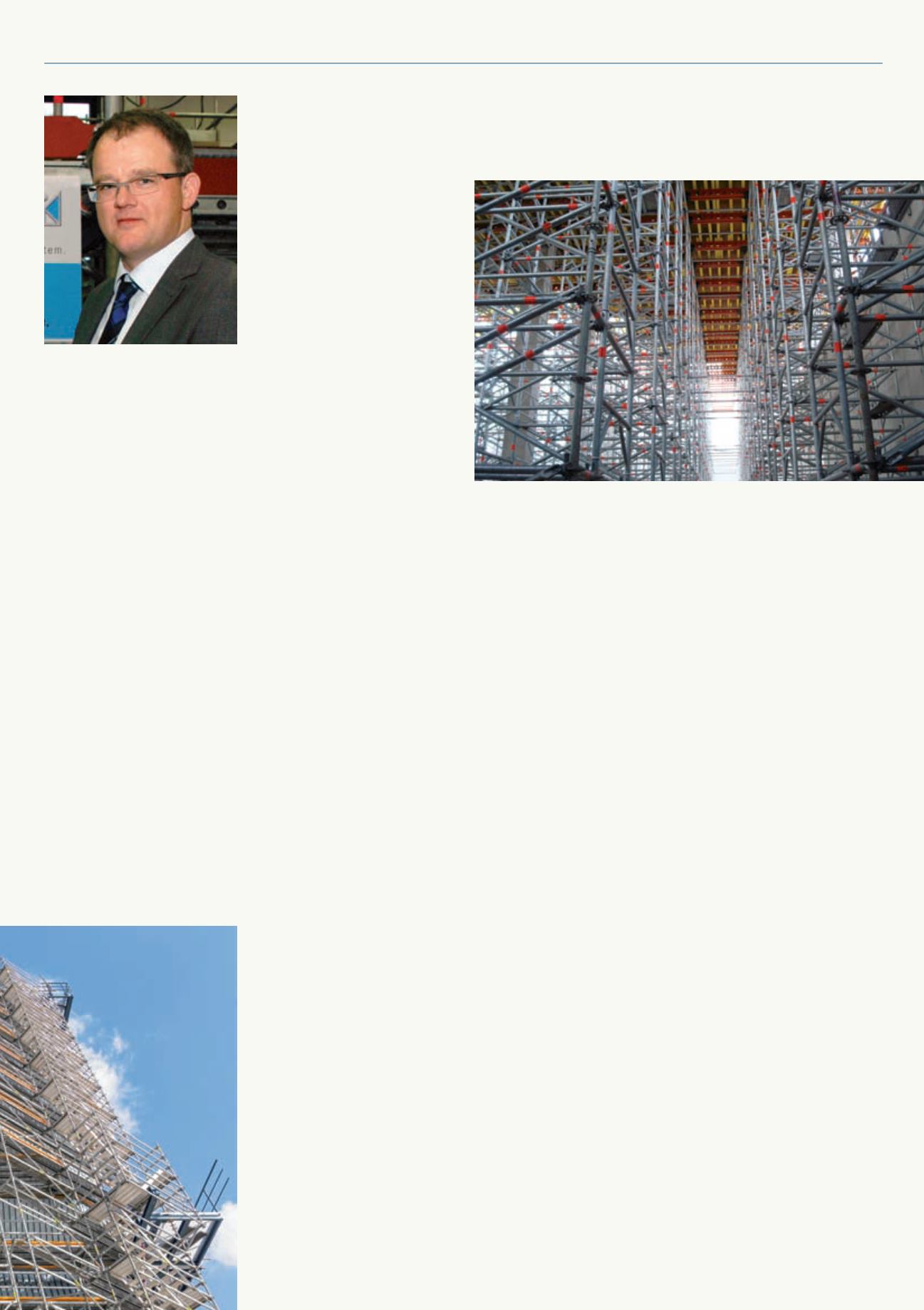
SCAFFOLDING INTERNATIONAL
43
NOVEMBER-DECEMBER 2013
access
INTERNATIONAL
Layher on Layher
Georg Layher
is the principal
shareholder
of scaffolding,
formwork and
access specialist
Layher, based in
Germany. He spoke
to Euan Youdale
about the different
types of scaffold
used worldwide
and the company’s
plans for growth.
A
t bauma this year Layher
launched its Allround
Lightweight modular
scaffolding system. It features
lighter components, increased
load-bearing capacity and an
AutoLock function for wedge
head connectors. According to
the company it can be assembled
10% faster than other scaffold
systems and transport is 12% more
efficient.
I asked Mr Layher why
lightweight systems are becoming
more popular. “Research has
shown that productivity in
erecting and dismantling of
scaffolds is directly related to
the weight that the workers
are handling, ergonomics and
avoiding physical stress are
becoming more of a concern all
the time and transport obviously
is a major cost factor in the
scaffolding industry.”
Mr Layher adds that experience
also shows that time saving and
health and safety considerations
are of particular relevance,
particularly on larger construction
projects.
There are of course wide
differences between the types
of scaffolding used around the
world. Even within Europe,
varying methods are adopted, with
Germany particularly standing out
from the rest.
“In Germany our frame system
SpeedyScaf is more commonly
used than our Allround system in
street work and façade scaffolding
installations.This is because before
the introduction of SpeedyScaf
such scaffolds typically comprised
wooden ladders which were
cross-braced and boarded. The
move, therefore, from this type
of installation to SpeedyScaf
was not as significant a change
as, for example, was the case
with the switch from tube and
fittings scaffolds to a frame type
alternative.
Global intentions
Moving across the Atlantic, the
differences are even more notable.
“The industrial scaffolding market
in North America is widely
dominated by modular systems.
However, we have noted that
only a very elementary number of
components that are available in
our Allround scaffolding system
are being used in this market
whilst other complementary
systems that we make available are
relatively unknown.
Mr Layher continues, “This
latter group would include, for
example, our range of stairs both
for building sites and public access
use, our range of system roofs,
our Protect cladding system, our
pedestrian bridging systems, and
our Advanced Guard Rail system.”
Safety is, of course, a key
element of the Layher philosophy
and in the UK and Europe, for
example, high standards are
stringently observed. “In the
North American market, vertical
ladders on the outside of scaffolds
are still widely seen in the country
and ‘old style’ North American
frames, particularly on street work
or façade scaffolding, are still used
– although partly benefitting from
upgrades using system decks and
handrails,” comments Mr Layher,
“We are of the opinion that there
are still opportunities in the
American market for further use
of our frame or modular systems
designed to optimise levels of
safety and efficiency.”
Unsurprisingly, Layher is
actively expanding its interests
around the globe. Of particular
interest are markets where big
industrial plants are being built.
“For example, this can often be
in relation to the exploration of
oil, gas and ore – it being well
understood that countries in
South America, Africa, Australasia
and the former Russian states are
particularly active in this regard.”
The best way to fulfil these
requirements, says Mr Layher, is
to be represented by subsidiaries
in each country of interest, using
local knowledge to interpret
domestic regulations.
“The latest subsidiaries that
we have added to our network
of 36 worldwide can be found in
Ecuador, Morocco, South Africa
and Kazakhstan.”
Intellectual property
Unfortunately there are also
less welcomed challenges
along the way. One of them, as
layer describes it, is ‘look alike’
components.
“For many years, we have had
to deal with a range of companies
who offer ‘look alike’ components
which are based on the principle
connection technique of the
Allround system – we believe
many of these originate in China.
Mr Layher adds, “Therefore it is,
of course, important to maintain
close attention to our patents and
intellectual property rights.
He continues, “Our leading
position is derived from
component innovation and
complementary systems, and
reflects key factors. These range
from reliability and speed of
supply, documented quality and
support literature and software,
to provision of local engineering
and marketing support for our
clients.”
AI
Georg Layher, principle
shareholder at Layher.
A typical Layher installation.


